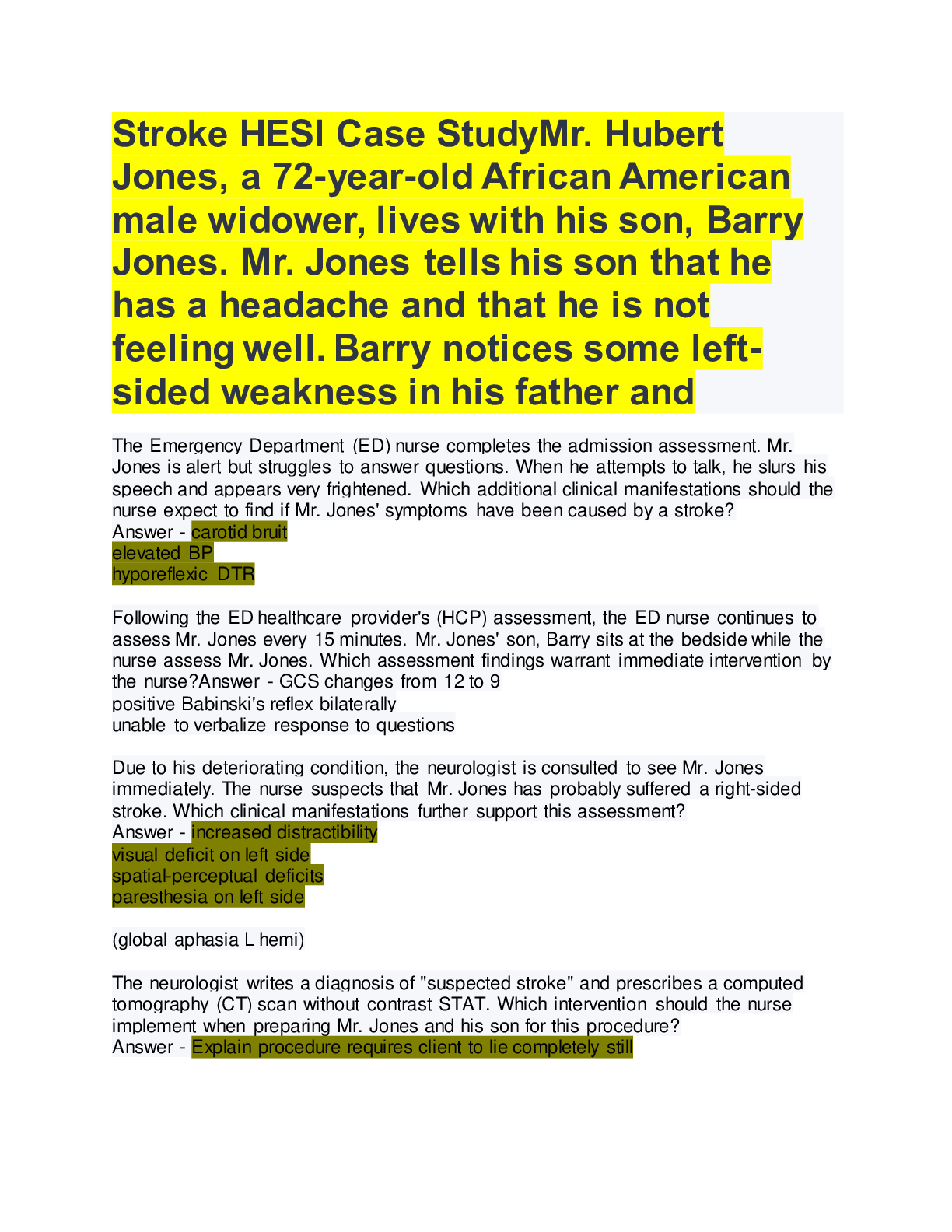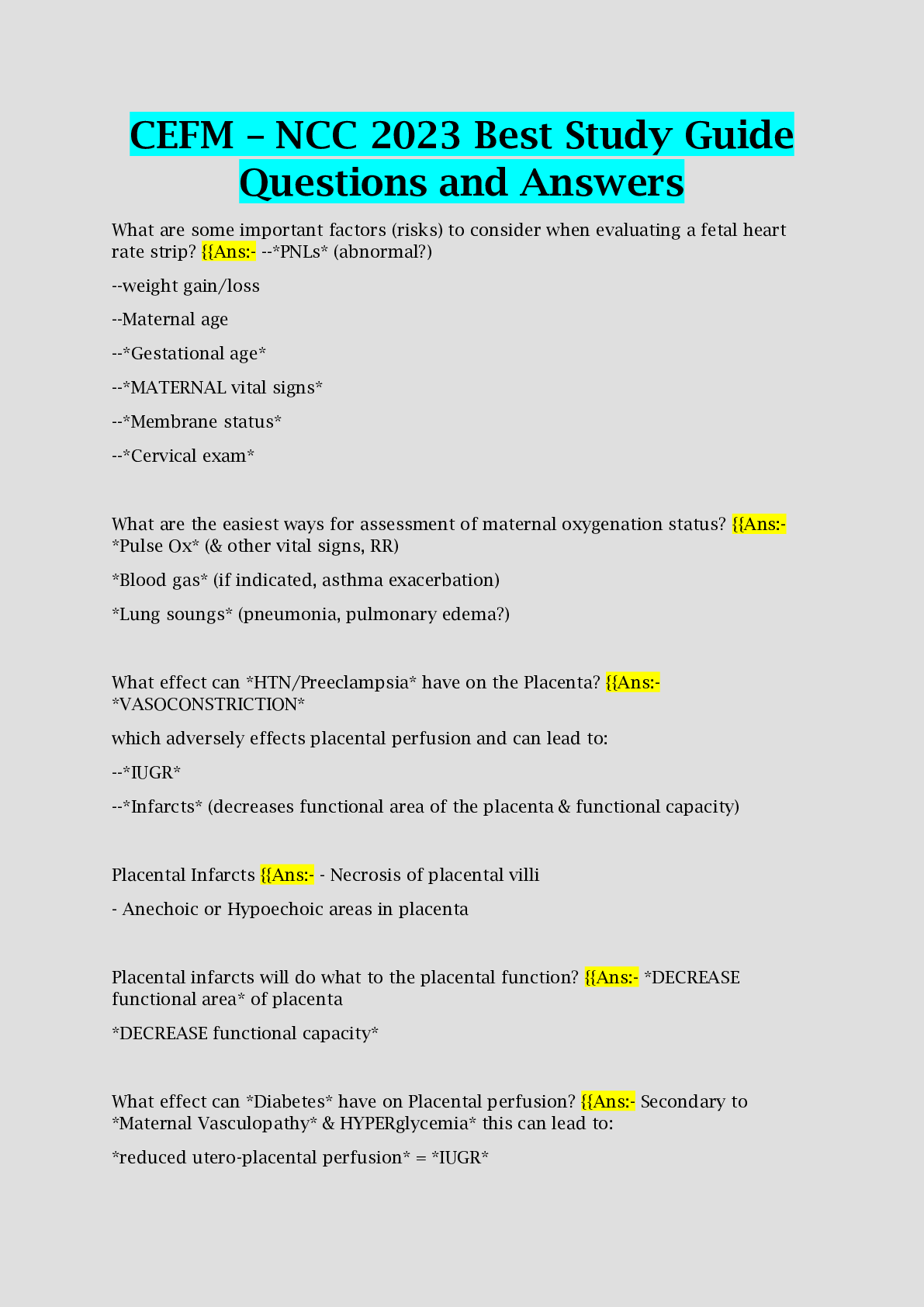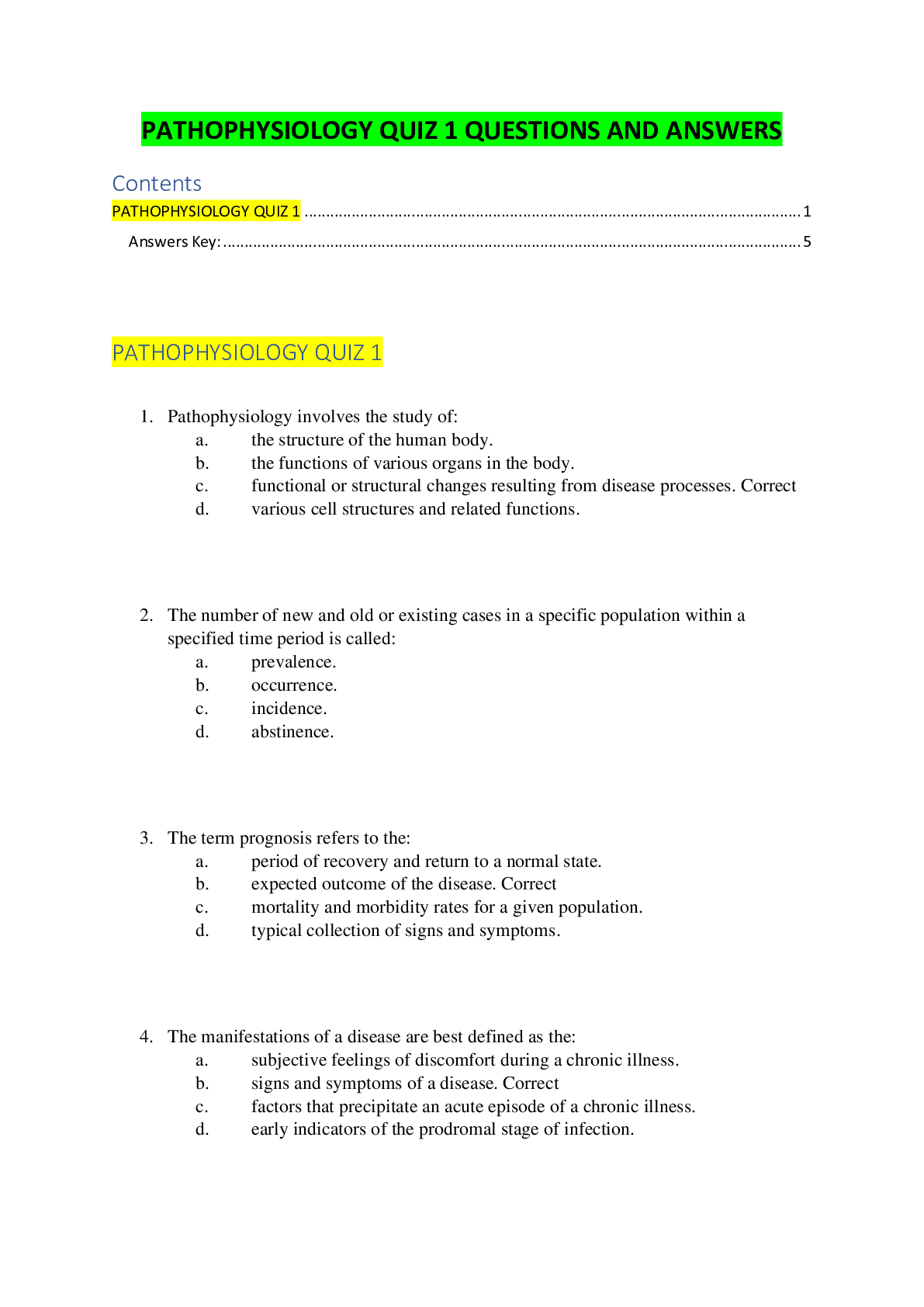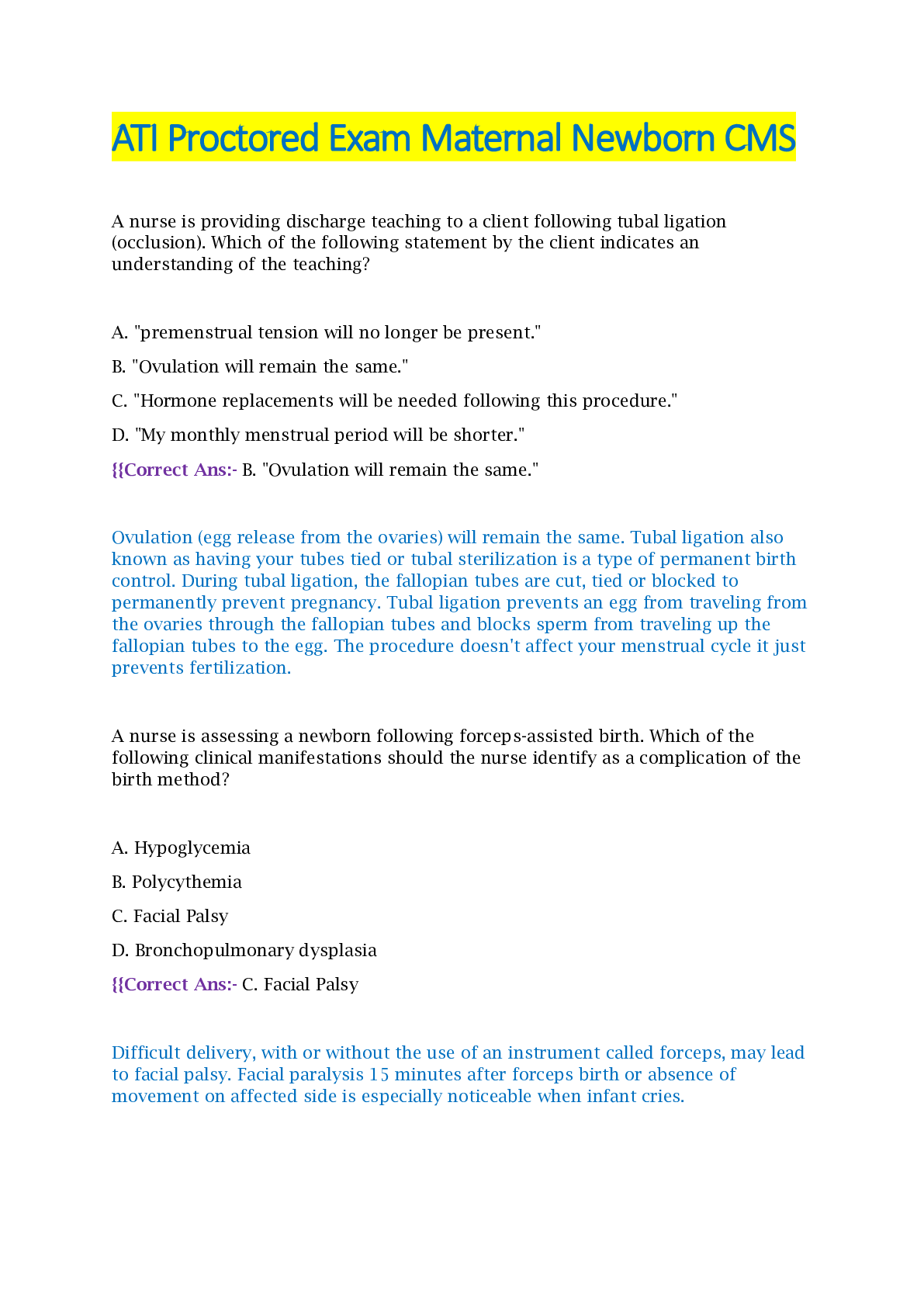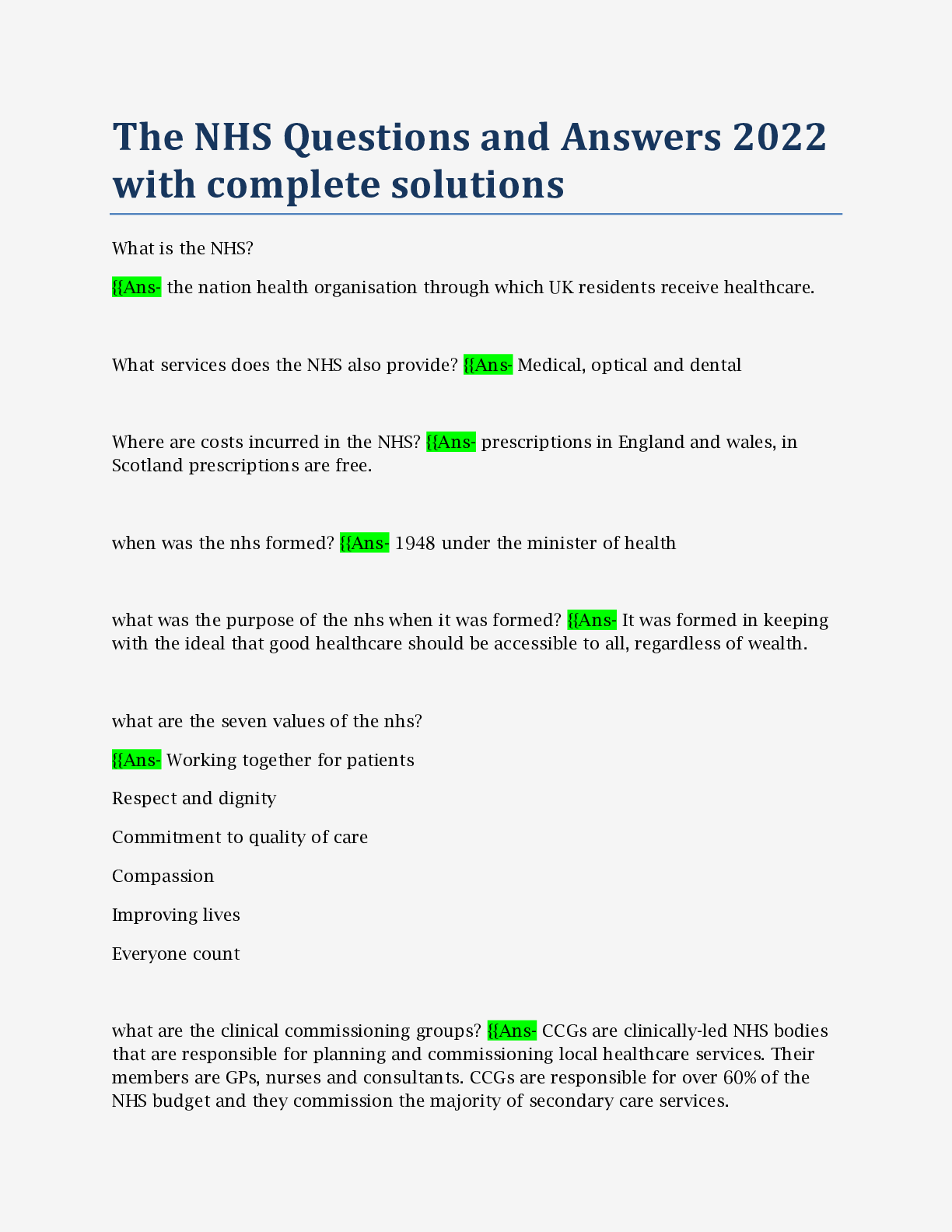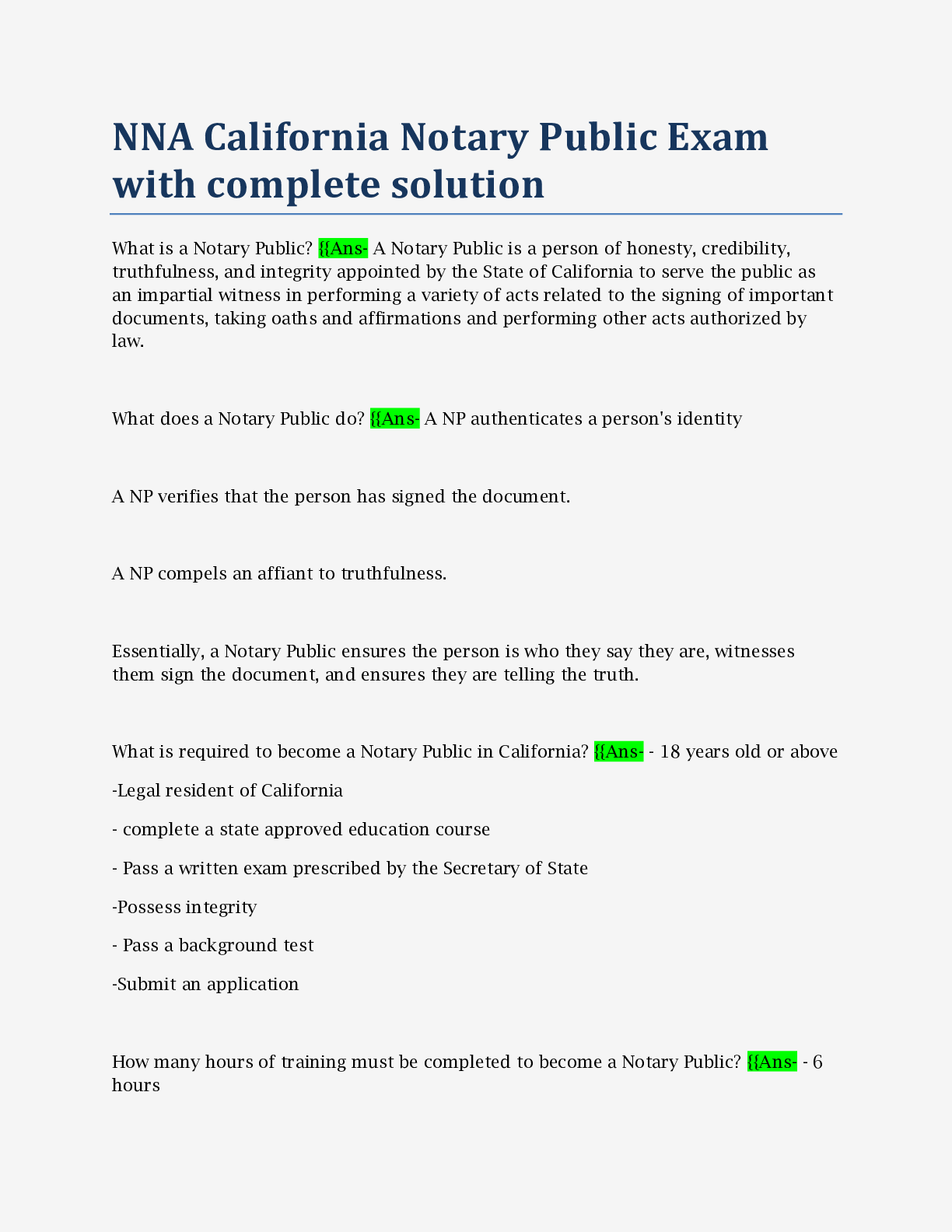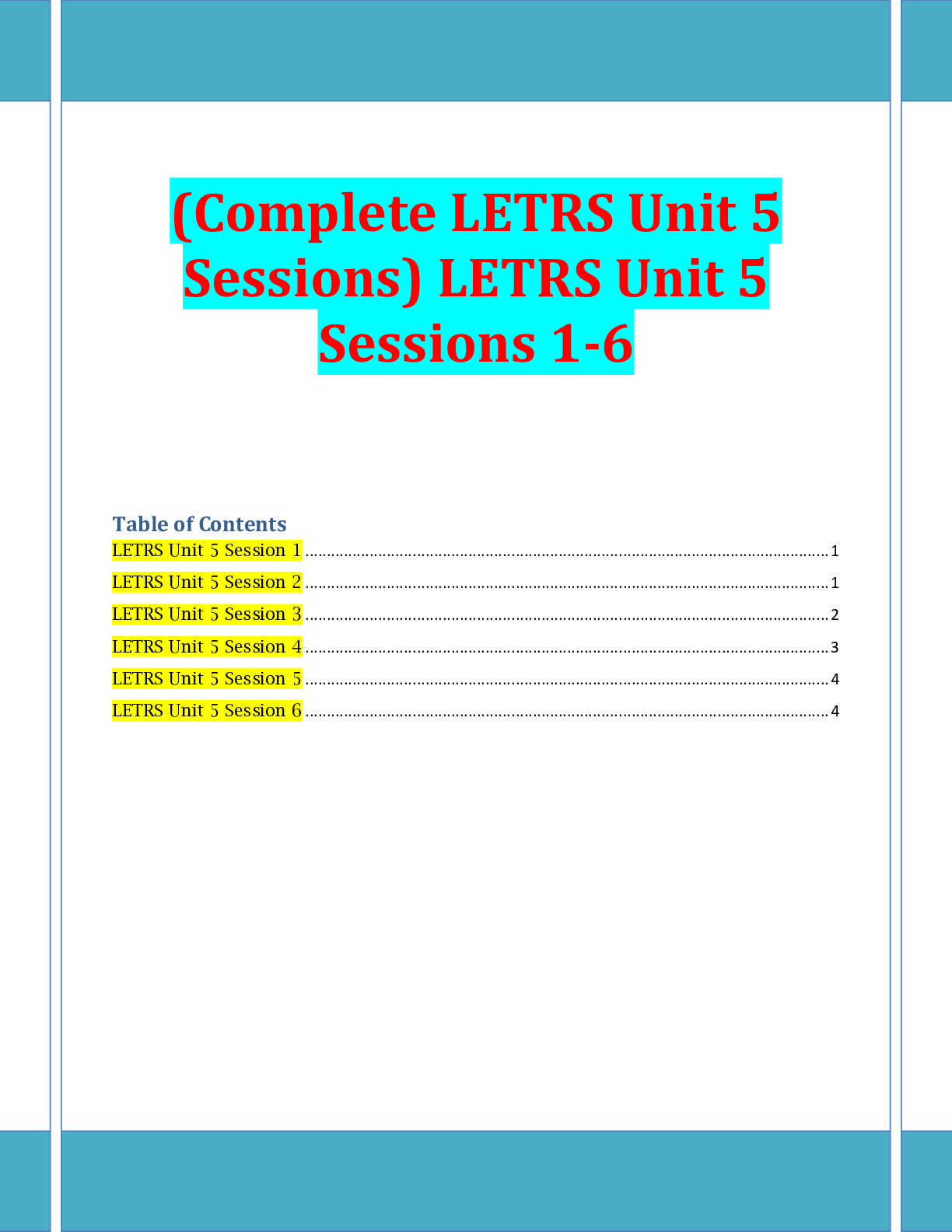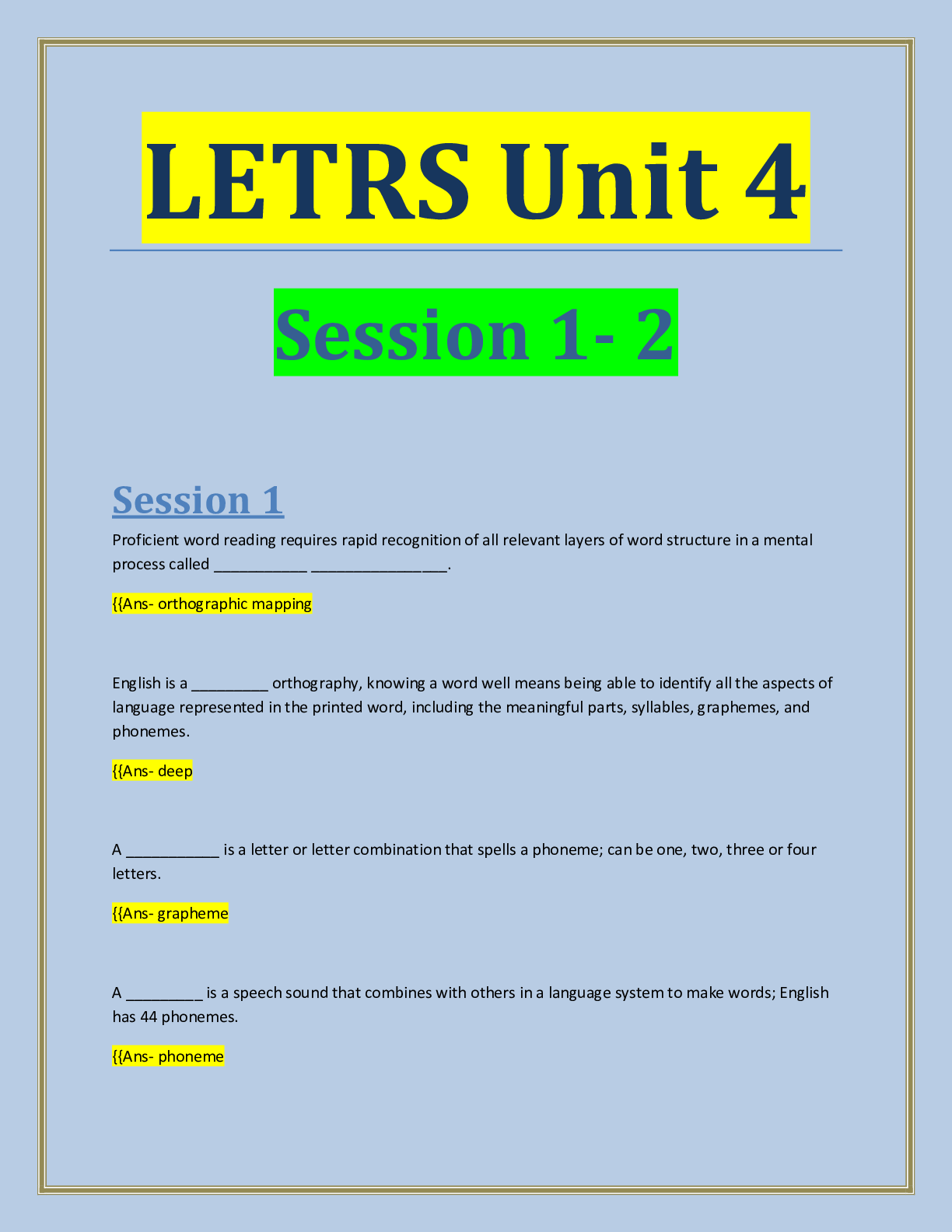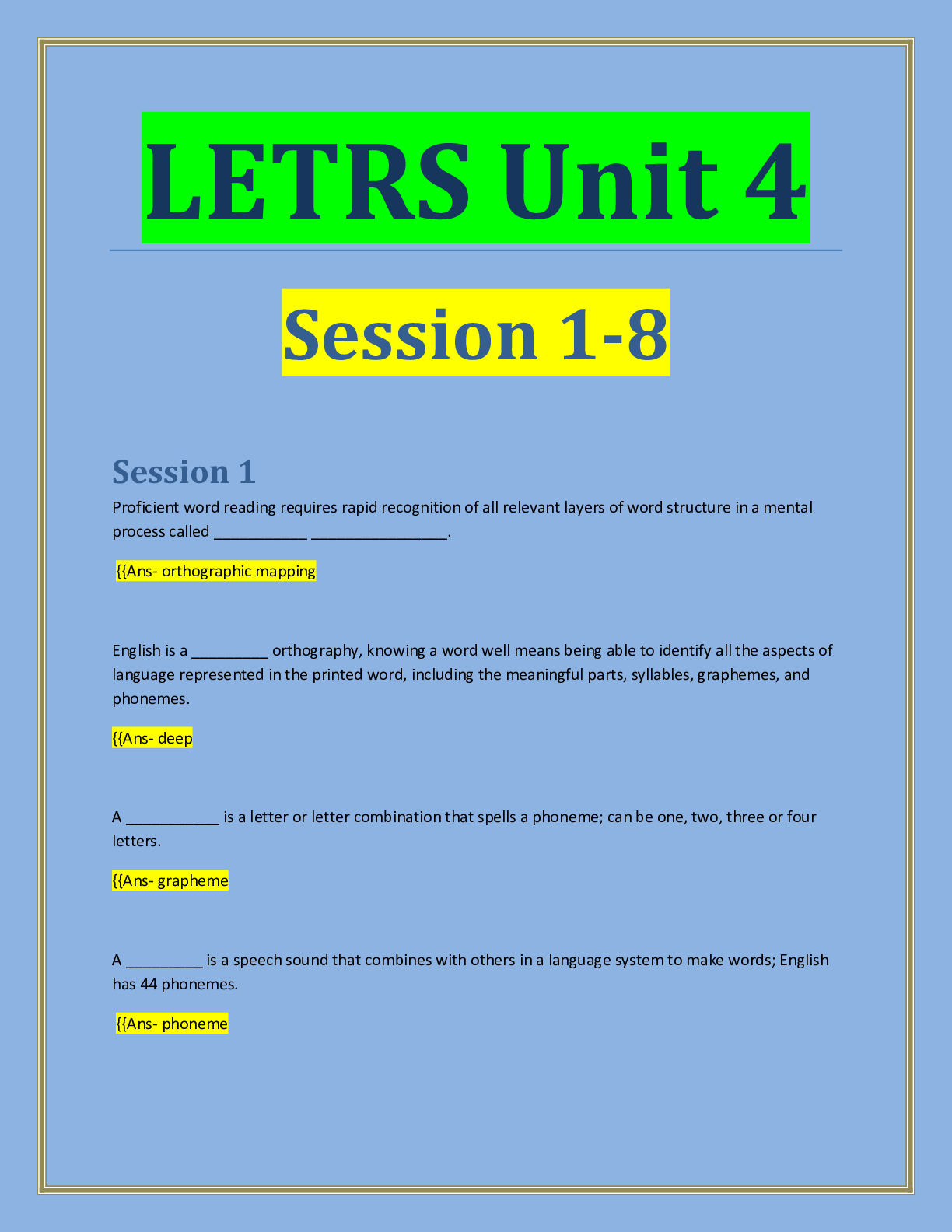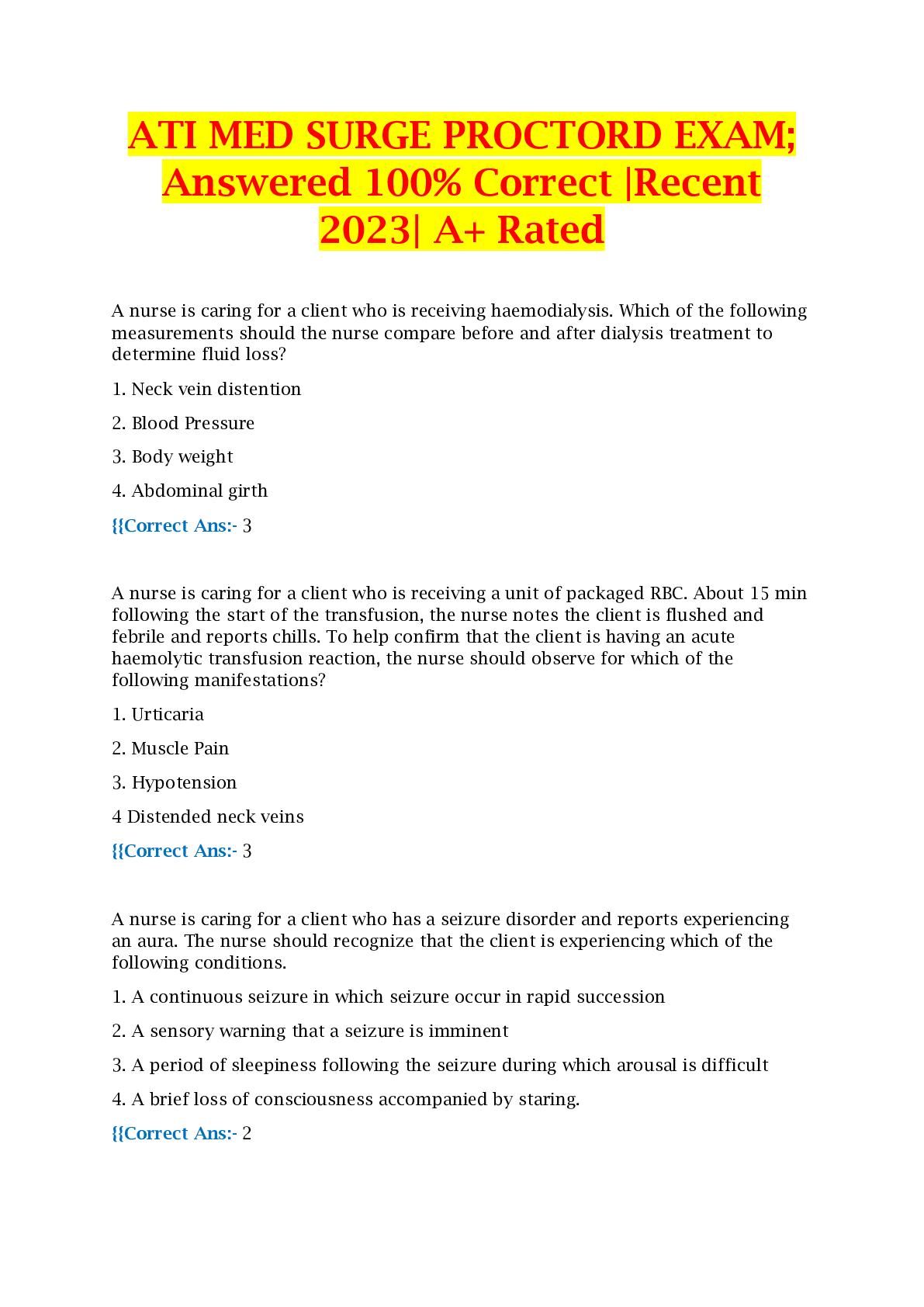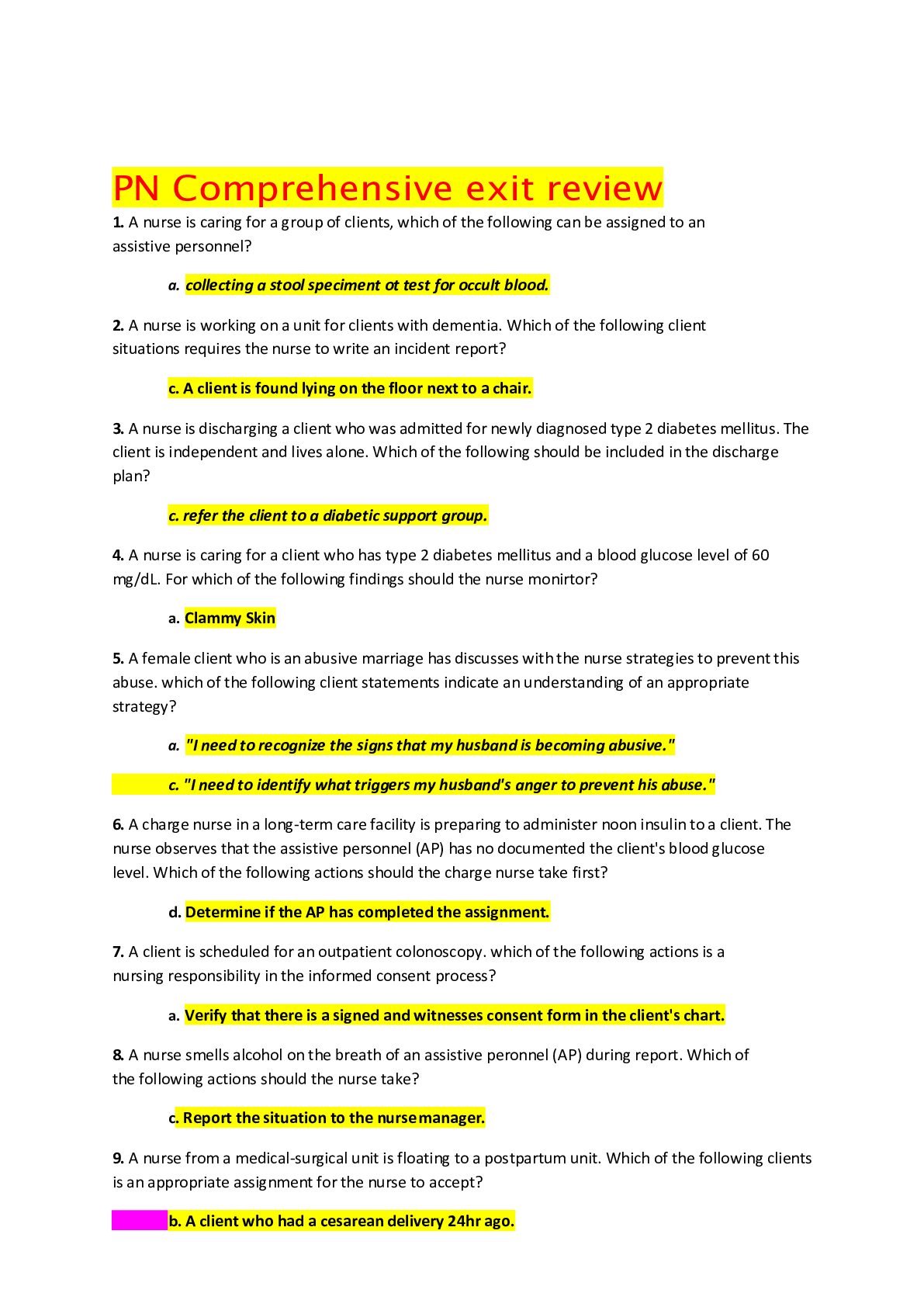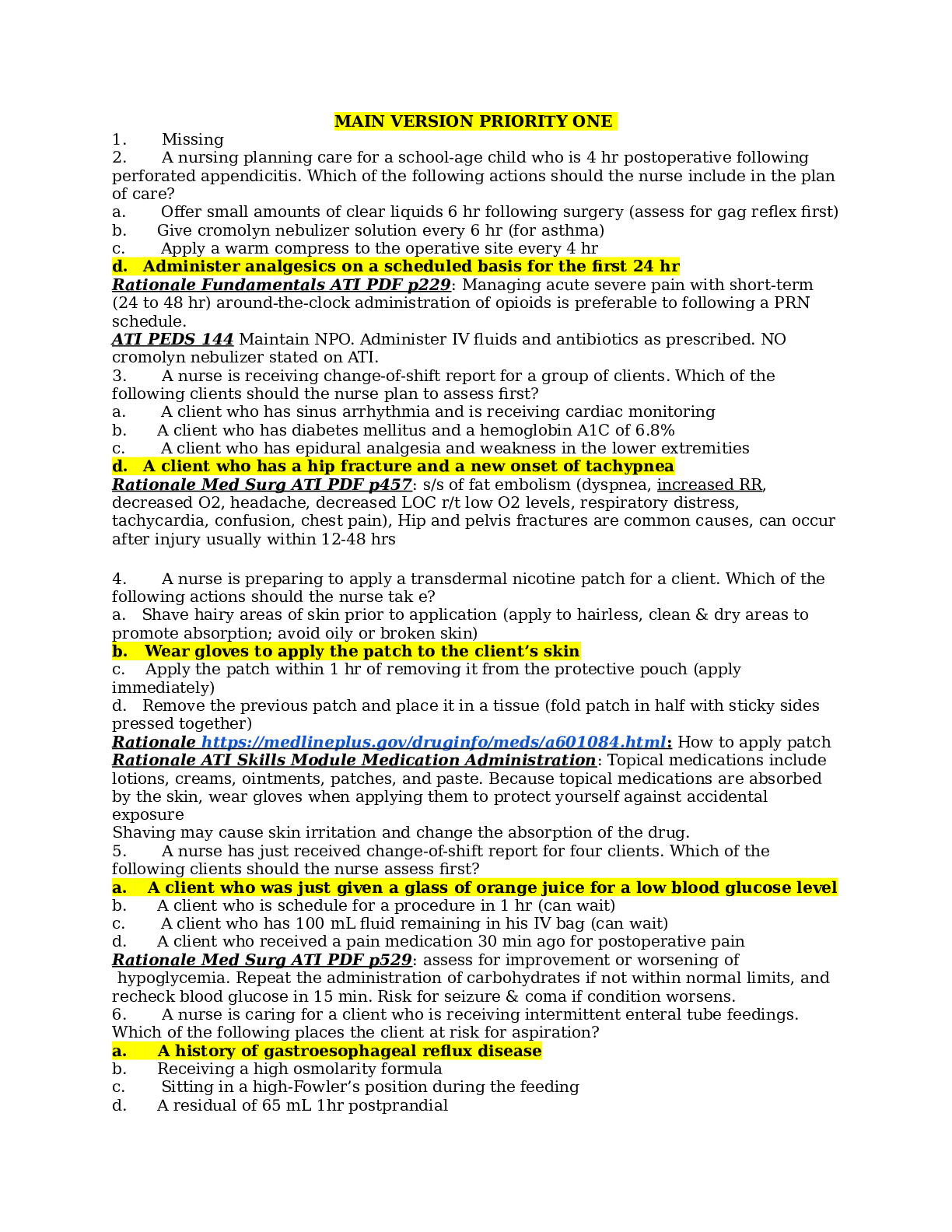PEDIATRIC NURSING > EXAM > HESI RN PEDIATRICS LATEST (+ 80 QUESTIONS AND ANSWERS |GUARANTEE A+ SCORE (All)
HESI RN PEDIATRICS LATEST (+ 80 QUESTIONS AND ANSWERS |GUARANTEE A+ SCORE
Document Content and Description Below
HESI RN PEDIATRICS LATEST (+ 80 QUESTIONS AND ANSWERS |GUARANTEE A+ SCORE An infant is born with a ventricular septal defect (VSD) and surgery is planned to correct the defect. The nurse recognizes t... hat surgical correction is designed to achieve which outcome? A. stop the flow of unoxygenated blood into systemic circulation B. increase the flow of unoxygenated blood to the lungs. C. prevent the return of oxygenated blood to the lungs. D. reduce peripheral tissue hypoxia and nailbed clubbing. {{Correct Ans- C. prevent the return of oxygenated blood to the lungs. Closure of VSDs stops oxygenated blood from being shunted from the left ventricle to the right ventricle. VSDs are acyanotic defects, which means that no unoxygenated blood enters the systemic circulation. (D) is common with Tetrology of Fallot, which is a cyanotic defect. A three-month old boy weighing 10 lbs, 15 oz has an axillary temperature of 98.9 degrees F. The nurse determines the daily caloric need for this child is approximately: A. 400 cal/day B. 500 cal/day C. 600 cal/day D. 700 cal/day {{Correct Ans- C. 600 cal/day 10 lbs, 15 oz = 10.9 lbs. Convert lbs to kg by dividing pounds by 2.2 (10.9/2.2) = 4.954 kg rounded to 5 kg. an infant requires 108 cal/kg/day (108 x 5 = 540 cal/day). However this infant requires 10% more calories because he has one degree temperature elevation. 10% of 540 is 54 and 54 + 540 = 594. This infant will require approximately 600 calories/day. Remember that a temperature elevation necessitates consumption of more calories. The nurse is preparing a health teaching program for parents of toddlers and preschoolers and plans to include information about prevention of accidental poisonings. It is most important for the nurse to include which instructions? A. tell children they should not taste anything but food B. store all toxic agents and medicines in locked cabinets. C. Provide special play areas in the house and restrict play in other areas. D. punish children i they open cabinets that contain household chemicals. {{Correct Ans- B. store all toxic agents and medicines in locked cabinets. A 6-month old infant with congestive heart failure (CHF) is receiving digoxin elixer. Which observation by the nurse warrants immediate intervention? A. apical heart rate of 60. B. sweating across the forehead C. doesn't suck well D. respiratory rate of 30 breaths/minute {{Correct Ans- A. apical heart rate of 60. A heart rate of 60 is much lower than normal for a 6-month old and warrants immediate intervention. the normal heart rate for a 6-month old is 80-150 bpm when awake, and a rate of 70 while sleeping is considered within normal limits. (B and C) are expected symptoms of heart failure in an infant. (D) normal limits for an infant. At 8am, the unlicensed assistive personnel (UAP) informs the charge nurse that a female adolescent client with acute glomerulonephritis has a blood pressure of 210/110. The 4am BP reading was 170/88. The client reports to the UAP that she is upset because her boyfriend did not visit last night. What action should the nurse take? A. give the client her 9am prescription for an oral diuretic early. B. administer PRN prescription of nifedipine (Procardia) sublingually. C. notify the healthcare provider and inform the nursing supervisor of the client's condition D. attempt to calm the client and retake the BP in 30 minutes. {{Correct Ans- B. administer PRN prescription of nifedipine (Procardia) sublingually. Sublingual Procardia lowers BP very quickly, and this should be done first. (A) may also be done, but oral diuretics do not work as rapidly as the sublingual antihypertensive. When notifying the healthcare provider, the first thing he/she will want to know is if the PRN antihypertensive has been administered. (D) does not consider the seriousness of this finding. The nurse should stay with the client until the BP is reduced. A premature newborn girl, born 24 hours ago, is diagnosed with a patent ductus arteriosus (PDA) and placed under an oxygen hood at 35%. The parents visit the nursery and ask to hold her. Which response should the nurse provide to the parents? A. Studies have shown that handling a sick newborn is not good for the baby and upsets the parents. B. the oxygen hood is holding the baby's oxygen level just at the point which is needed. You may stroke and talk to her. C. Since your baby has been doing well under oxygen for 24 hours, I can let you hold the baby without oxygen. D. You can hold the baby with the oxygen blowing on the baby's face since the level is very close to room air. {{Correct Ans- B. the oxygen hood is holding the baby's oxygen level just at the point which is needed. You may stroke and talk to her. The baby is at 35% which is much more than room air (21%) and at this time the baby should not be moved from under the hood. the nurse should offer the parents an alternative such as to stroke and reassure the infant. Holding sick babies benefits the infant and the parents, but the first consideration now has to be the infant's oxygenation. The nurse should not take the baby out from under the hood without a prescription from the healthcare provider, as this could severely compromise the infant. A PO2 of 35% cannot be readily achieved with "blow by" oxygen. [Show More]
Last updated: 2 years ago
Preview 1 out of 40 pages
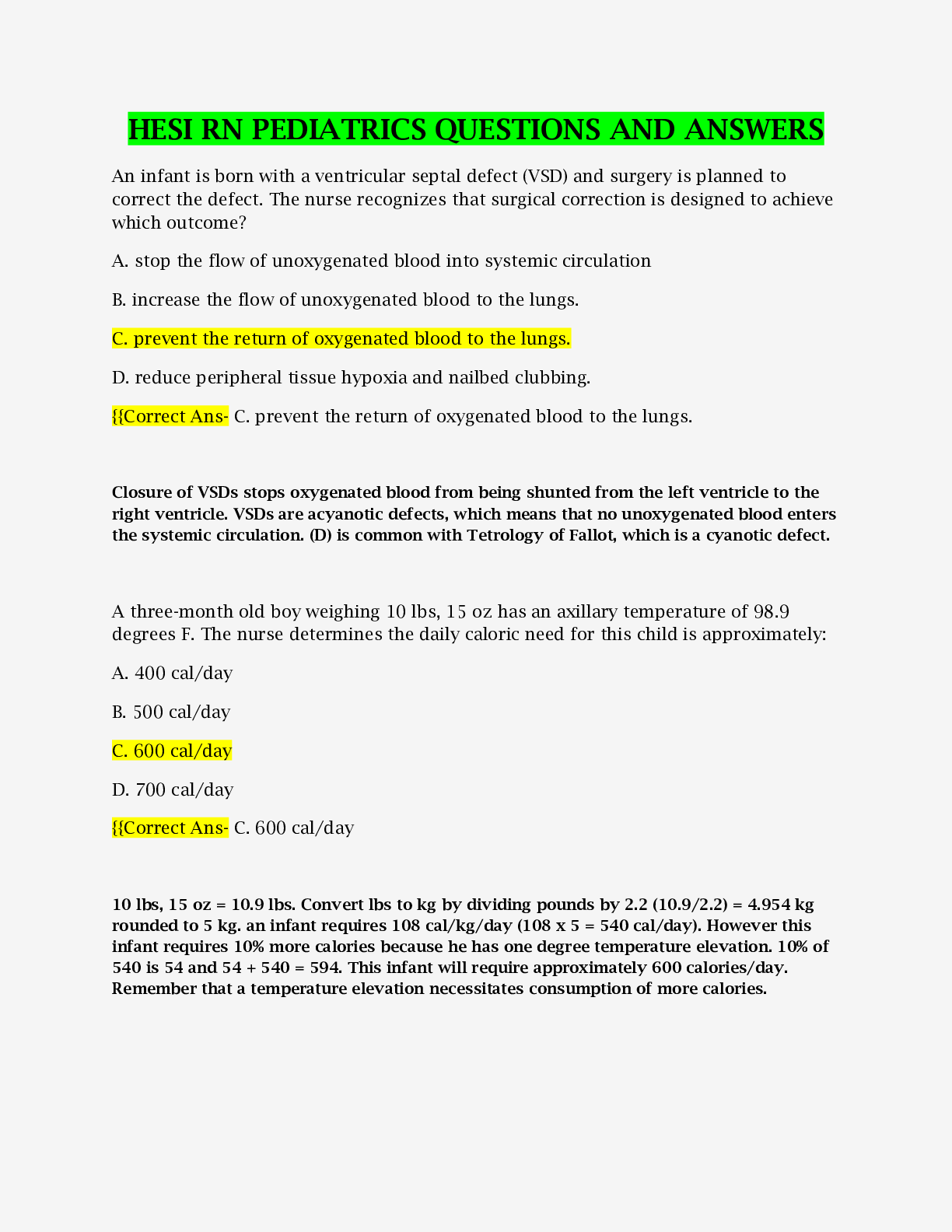
Buy this document to get the full access instantly
Instant Download Access after purchase
Buy NowInstant download
We Accept:

Reviews( 0 )
$11.00
Can't find what you want? Try our AI powered Search
Document information
Connected school, study & course
About the document
Uploaded On
Jun 14, 2023
Number of pages
40
Written in
Additional information
This document has been written for:
Uploaded
Jun 14, 2023
Downloads
0
Views
65

